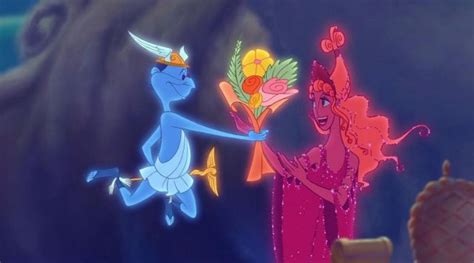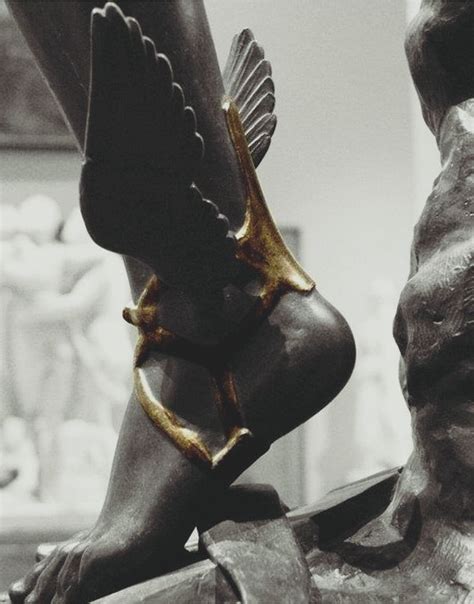hermes boots wings | Hermes shoes greek mythology hermes boots wings • Media related to Talaria at Wikimedia Commons See more The Speedmaster was not originally designed for space exploration. Instead, it was introduced in 1957 as a sport and racing chronograph following on from the early chronographs . See more
0 · winged sandals worn by Hermes
1 · winged sandals greek mythology website
2 · who gave Hermes winged shoes
3 · what were Hermes boots called
4 · shoes with wings greek mythology
5 · Hermes winged sandals greek mythology
6 · Hermes shoes greek mythology
7 · Hermes flying shoes percy jackson
1.8° L - Briess Brewers 2-Row is a fantastic base malt that can be used for all beer styles. Briess 2-row contributes a clean, sweet, and slightly malty character .

The Talaria of Mercury (Latin: tālāria) or The Winged Sandals of Hermes (Ancient Greek: πτηνοπέδῑλος, ptēnopédilos or πτερόεντα πέδιλα, pteróenta pédila) are winged sandals, a symbol of the Greek messenger god Hermes (Roman equivalent Mercury). They were said to be made by the god Hephaestus of . See moreThe Latin noun tālāria, neuter plural of tālāris signifies "of the ankle". It is not quite certain how the Romans arrived at the meaning of . See moreIn Rick Riordan's Percy Jackson & the Olympians series, the talaria is a pair of sneakers worn by Grover Underwood.In See more• Media related to Talaria at Wikimedia Commons See more
In ancient Greek literature, the sandals of Hermes are first of all mentioned by Homer (ἀμβρόσια χρύσεια; ambrósia khrýseia, . See more• EADS Talarion an unmanned air vehicle named after talaria.• Hermes also wears a winged petasos, a traveler hat. In other representations he wears a winged helmet.• Caduceus, the staff of Hermes See moreIn Greek mythology, talaria (from Latin: talaria, neuter plural of talaris, meaning "of the ankle"), winged heel-straps or sandals are one of the attributes of Hermes. Talaria are attested as . Hermes was given golden sandals to wear on his travels. Artwork often depicts these shoes had wings on them to allow the messenger to move .
Hermes was depicted as either a handsome and athletic, beardless youth, or as an older bearded man. His attributes included the caduceus or herald's wand, winged boots, traveller's cap and .Hermes wore winged, short leather boots called by the Greeks pteroeis pedila and by the Romans talaria. His wide-brimmed felt cap was the hat of Aidoneus (the Unseen) which rendered its .
winged sandals worn by Hermes
In the Odyssey, Homer does indeed say that the sandals are golden and composed partly of ambrosia, but, as noted both by Wikipedia, and by William Smith's 1870 . The most distinctive symbol associated with Hermes, however, was the caduceus. This iconic staff had two intertwined snakes wrapped around it and was often topped with a sphere or wings. It was both a powerful magical . Hermes, known for his speed and cunning, is often depicted with winged sandals and sometimes a winged helmet. These wings symbolize his role as the messenger of the gods, able to move swiftly between the mortal and . Hermes, Greek god, son of Zeus and the Pleiad Maia; often identified with the Roman Mercury. Hermes was associated with the protection of cattle and sheep. In the .
The Talaria of Mercury (Latin: tālāria) or The Winged Sandals of Hermes (Ancient Greek: πτηνοπέδῑλος, ptēnopédilos or πτερόεντα πέδιλα, pteróenta pédila) are winged sandals, a symbol of the Greek messenger god Hermes (Roman equivalent Mercury).In Greek mythology, talaria (from Latin: talaria, neuter plural of talaris, meaning "of the ankle"), winged heel-straps or sandals are one of the attributes of Hermes. Talaria are attested as early as Homer, who refers to them as ἀμϐρόσια χρύσεια / ambrósia khrúseia ("immortal/divine and .
Hermes is perhaps most recognizable due to his unusual staff and winged boots. These items not only appeared in art but also became central elements in many of the stories from Greek mythology . Hermes’ staff was known as “The Caduceus.” Hermes was given golden sandals to wear on his travels. Artwork often depicts these shoes had wings on them to allow the messenger to move more swiftly when carrying out his duties. Sometimes the god’s wide-brimmed hat was also adorned with wings. The sandals and hat became instantly identifiable emblems of Hermes.Hermes was depicted as either a handsome and athletic, beardless youth, or as an older bearded man. His attributes included the caduceus or herald's wand, winged boots, traveller's cap and cloak. His Roman name was Mercury.
Hermes wore winged, short leather boots called by the Greeks pteroeis pedila and by the Romans talaria. His wide-brimmed felt cap was the hat of Aidoneus (the Unseen) which rendered its wearer invisible. In the Odyssey, Homer does indeed say that the sandals are golden and composed partly of ambrosia, but, as noted both by Wikipedia, and by William Smith's 1870 Dictionary of Greek and Roman Biography and Mythology, "Homer no where says or suggests that they were provided with wings." The most distinctive symbol associated with Hermes, however, was the caduceus. This iconic staff had two intertwined snakes wrapped around it and was often topped with a sphere or wings. It was both a powerful magical object that could cause sleep and a symbol of his role as the herald of Zeus.
Hermes, known for his speed and cunning, is often depicted with winged sandals and sometimes a winged helmet. These wings symbolize his role as the messenger of the gods, able to move swiftly between the mortal and divine worlds. Hermes, Greek god, son of Zeus and the Pleiad Maia; often identified with the Roman Mercury. Hermes was associated with the protection of cattle and sheep. In the Odyssey, however, he appears mainly as the messenger of the gods and the conductor of .
winged sandals greek mythology website
The Talaria of Mercury (Latin: tālāria) or The Winged Sandals of Hermes (Ancient Greek: πτηνοπέδῑλος, ptēnopédilos or πτερόεντα πέδιλα, pteróenta pédila) are winged sandals, a symbol of the Greek messenger god Hermes (Roman equivalent Mercury).
In Greek mythology, talaria (from Latin: talaria, neuter plural of talaris, meaning "of the ankle"), winged heel-straps or sandals are one of the attributes of Hermes. Talaria are attested as early as Homer, who refers to them as ἀμϐρόσια χρύσεια / ambrósia khrúseia ("immortal/divine and .
Hermes is perhaps most recognizable due to his unusual staff and winged boots. These items not only appeared in art but also became central elements in many of the stories from Greek mythology . Hermes’ staff was known as “The Caduceus.” Hermes was given golden sandals to wear on his travels. Artwork often depicts these shoes had wings on them to allow the messenger to move more swiftly when carrying out his duties. Sometimes the god’s wide-brimmed hat was also adorned with wings. The sandals and hat became instantly identifiable emblems of Hermes.Hermes was depicted as either a handsome and athletic, beardless youth, or as an older bearded man. His attributes included the caduceus or herald's wand, winged boots, traveller's cap and cloak. His Roman name was Mercury.Hermes wore winged, short leather boots called by the Greeks pteroeis pedila and by the Romans talaria. His wide-brimmed felt cap was the hat of Aidoneus (the Unseen) which rendered its wearer invisible.
In the Odyssey, Homer does indeed say that the sandals are golden and composed partly of ambrosia, but, as noted both by Wikipedia, and by William Smith's 1870 Dictionary of Greek and Roman Biography and Mythology, "Homer no where says or suggests that they were provided with wings."
The most distinctive symbol associated with Hermes, however, was the caduceus. This iconic staff had two intertwined snakes wrapped around it and was often topped with a sphere or wings. It was both a powerful magical object that could cause sleep and a symbol of his role as the herald of Zeus. Hermes, known for his speed and cunning, is often depicted with winged sandals and sometimes a winged helmet. These wings symbolize his role as the messenger of the gods, able to move swiftly between the mortal and divine worlds.

who gave Hermes winged shoes
what were Hermes boots called
Introduction. Malted barley comes in two basic categories: 2-Row and 6-row. Each variety has its own sets of pro’s and cons in terms of yield, enzymatic content, and flavor. Here’s what you need to know, if you want to make malted barley part of your whiskey grain bill. Flavor. 2-Row malted barley has better/more flavor than 6-row. Yield.Perfection. For generations, Premium Two Row has been our pinnacle base malt. It’s perfect for all beer styles, especially American ales and lagers, producing a very clean, smooth finish. When you want peak .
hermes boots wings|Hermes shoes greek mythology



























